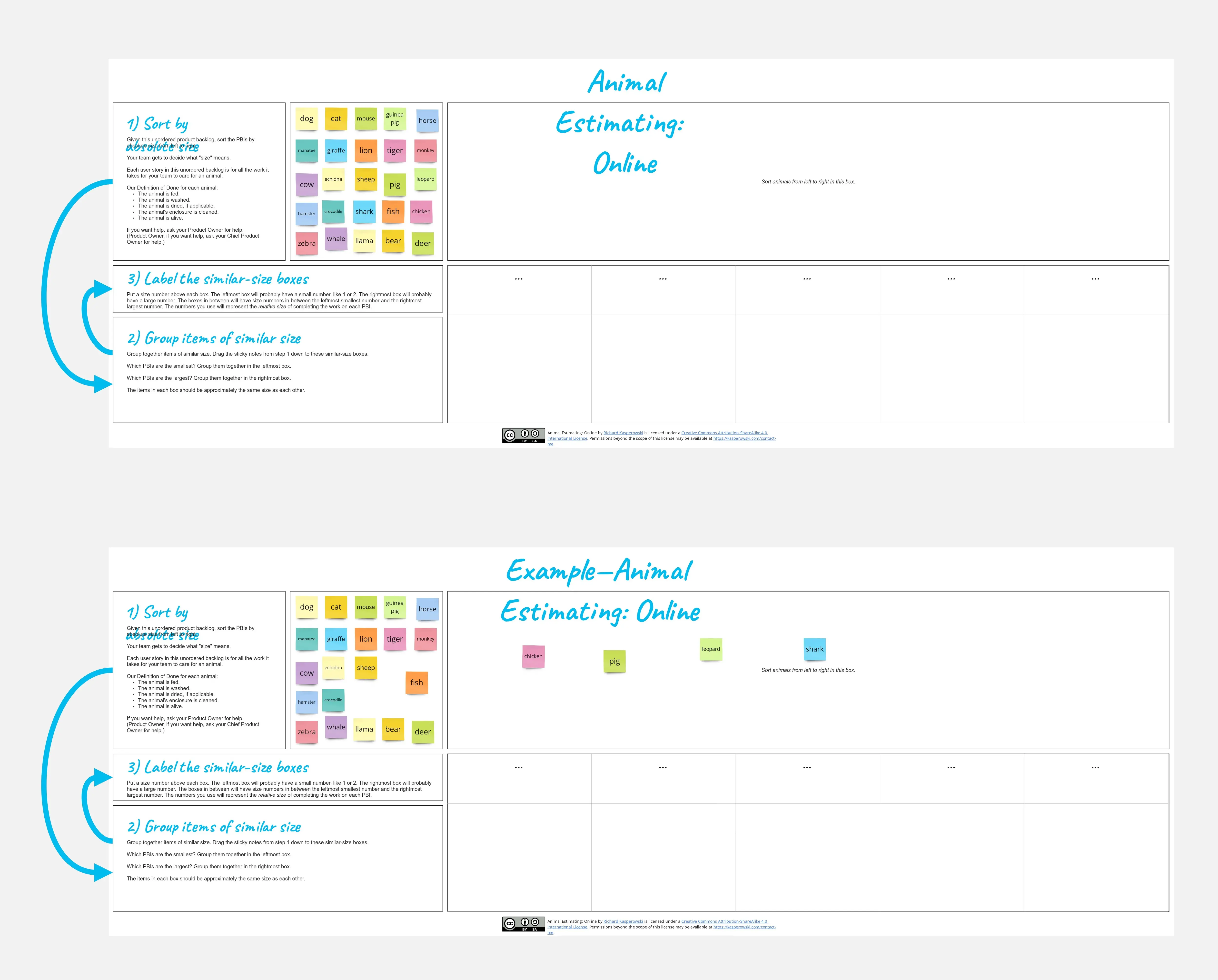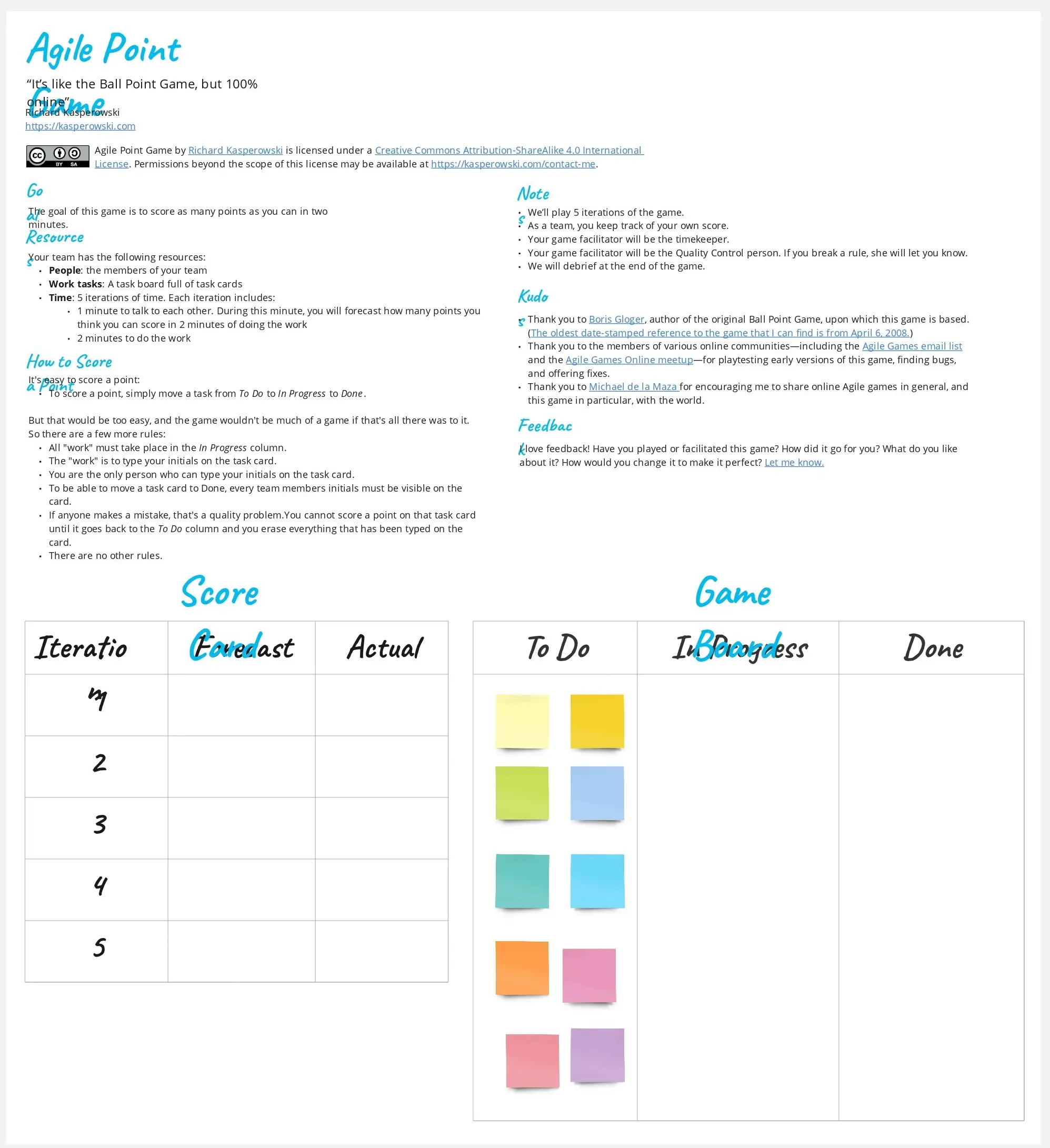Want to teach whole-team relative size estimating using Planning Poker®?
Doggy Estimating: Online is the activity for you and your learners. This template includes all the instructions that your learners need to learn how to estimate work in story points using planning poker.
Facilitators, follow these steps to use this activity:
Create a new board and add this template. I usually add one instance of the template for every five students.
Share an Edit link with your students.
Ask your students to volunteer for the various roles.
Product Owner: Tells Development Team members what the next dog breed is and answers questions about the dog breeds. If there is only one team of students, the teacher plays the role Product Owner.
Scrum Master: Facilitates planning poker for the rest of the team
Development Team members: Play planning poker with each other to estimate the size of the work tasks.
If there are multiple teams, each team has one Product Owner, one Scrum Master, and numerous Development Team members.
Explain planning poker to your students and show them how to use the Miro planning poker tool.
Set up the game scenario. I usually say something like this:
Hello, team(s)!
My advisors have done some market research, and we have discovered some interesting characteristics about this region of the world. It turns out that the people in this region have large disposable incomes and a large percentage of them own dogs. We have put these two characteristics together and determined that there is a business opportunity for a high-end dog grooming business.
We have recruited you to be a team of dog groomers.
We want your help estimating the amount of work it is to groom various breeds of dogs. We'll use your estimates to guide us as we create our price list.
We are asking you for help because we know from past experience that the people doing the work are the best people to estimate the size of the work.
Your Product Owner will give you the name of a dog breed, one dog breed at a time. For each dog breed, you will play planning poker together to determine the size of the work task: grooming a dog of that breed.
The Definition of Done for grooming a dog is:
The dog has been washed.
The dog has been dried.
The dog's hair has been trimmed in a style appropriate for the breed. (Facilitator note to self: some dogs have fur, but others have hair; not all dogs need to be trimmed.)
The dog has been brushed.
The dog's teeth have been cleaned.
The dog's claws have been trimmed.
The dog is wearing a super-cute bandana.
If you want more information about the dog breed, ask your Product Owner for help. If they can answer your question, they will. Product Owner(s), if you want help, you can ask me for more information—I am the Chief Product Owner.
After you have estimated the first dog, your Product Owner will give you the name of the next dog breed. We'll be estimating the dog breeds one at a time. If the amount of work for the second dog is about the same as the first dog, give it the same size estimate. If the amount of work is bigger, give it a bigger size estimate. If the amount of work is smaller, give it a smaller size estimate.
Any questions?
OK, here we go!
Give the Product Owner(s) the name of the first dog breed. The Scrum Masters facilitate their teams' playing planning poker to estimate the size of the work of grooming a dog of that breed.
Give subsequent dog breed names to the Product Owner(s) one at a time. I usually use a list like this. Note that the first five dog breeds are real, and the last one is fake. I invent a new fake dog breed every time.
Enjoy the learning!






